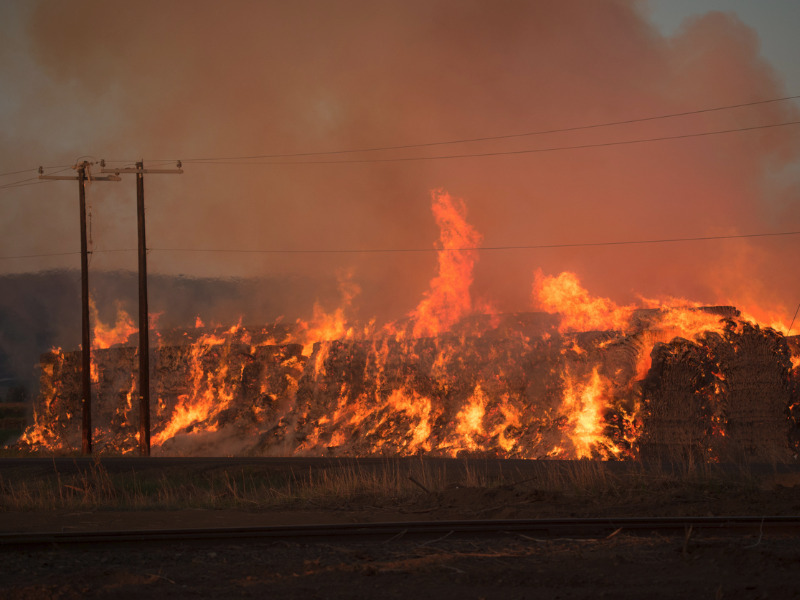Why hay barn fires catch insurers’ attention

The massive amount of water and firefighting resources required to put out hay barn fires is just one reason why these blazes are so stubborn, an industry professional said at the Farm Fire Summit last week.
A multi-million-dollar hay barn fire on a farm northwest of Exeter, Ont. in July took two-and-a-half million gallons of water to put out, said Randy Drysdale, assistant vice president, loss control, technical development at Farm Mutual Re. That fire involved 75 firefighters from nine surrounding communities, 16 water tankers running around the clock for 25 hours, and a fully engulfed structure with about 3,000 large, square bales of hay and straw.
“Hay barn fires are stubborn,” Drysdale said at the Nov. 1 summit in Cambridge, Ont. “They don’t get extinguished and burn themselves out unless a lot of work is done to try to extinguish the fire in those bales, which is what happened in the Exeter fire.
“You’re fighting one fire, but it’s actually 3,000 small fires, and that’s the challenge.”
In the Exeter fire, officials used a front-end loader to remove bales and soak them down individually. But a bale of hay or straw can sit in a puddle of water for two or three hours and still be on fire or rekindle over time even if it’s put out.
“That’s a function of the compaction of hay and its ability to shed water and the ability of the material to continually maintain that heat inside the bale itself,” Drysdale explained. “You fight a fire one bale at a time… Rekindling is a major concern; that Exeter fire, they went back for the next three nights.”
Spontaneous combustion is a concern, which, if not understood can be difficult to explain to policyholders. Ken Worsley, chief operating officer at Nova Mutual Insurance Company, told Canadian Underwriter in August this phenomenon can occur when hay is baled with a higher moisture content than wanted.
Related: Will building code changes affect farm fire severity?
When hay bales are wound tight, it creates heat. “If the heat can’t dissipate out, it just keeps building up until it reaches the ignition temperature of the hay or straw,” he said. “What happens is it starts to smolder and burn and starts to consume itself. Then once you start pulling it apart to try to put the fire out, oxygen gets in and actually makes it worse.”
If bales or other products are stacked too high in a barn, it can make it nearly impossible to fight the blaze, Drysdale added. “How are you going to fight [the fire] when you’ve got to take those bales out one at a time and you’re making [firefighters] so restricted on their entry points?” he asked.
“It’s the commodity that’s going to start the fires. If the stack is too high, it impedes firefighting efforts.”
Combustible construction materials and items stored near barns can also pose a risk. “We quite often see large stacks of pallets and empty bins up against those barns,” Drysdale said.
Lack of water is always a concern; an entire community can be affected. “In many municipalities, some industries and factories use a lot of water in their day-to-day operations, so that fire could shut down the factory. That’s another cost that we don’t often think about.”
And then there are the societal costs — firefighters (often volunteers) need to be kept hydrated, warm and fed. “What if there’s another fire in this municipality at the exact same time and it’s a big fire?” Drysdale asked. “We’re seeing more and more of these large barns in municipalities, so you can have more fires.”
Feature image by iStock.com/Heidi Ihnen







